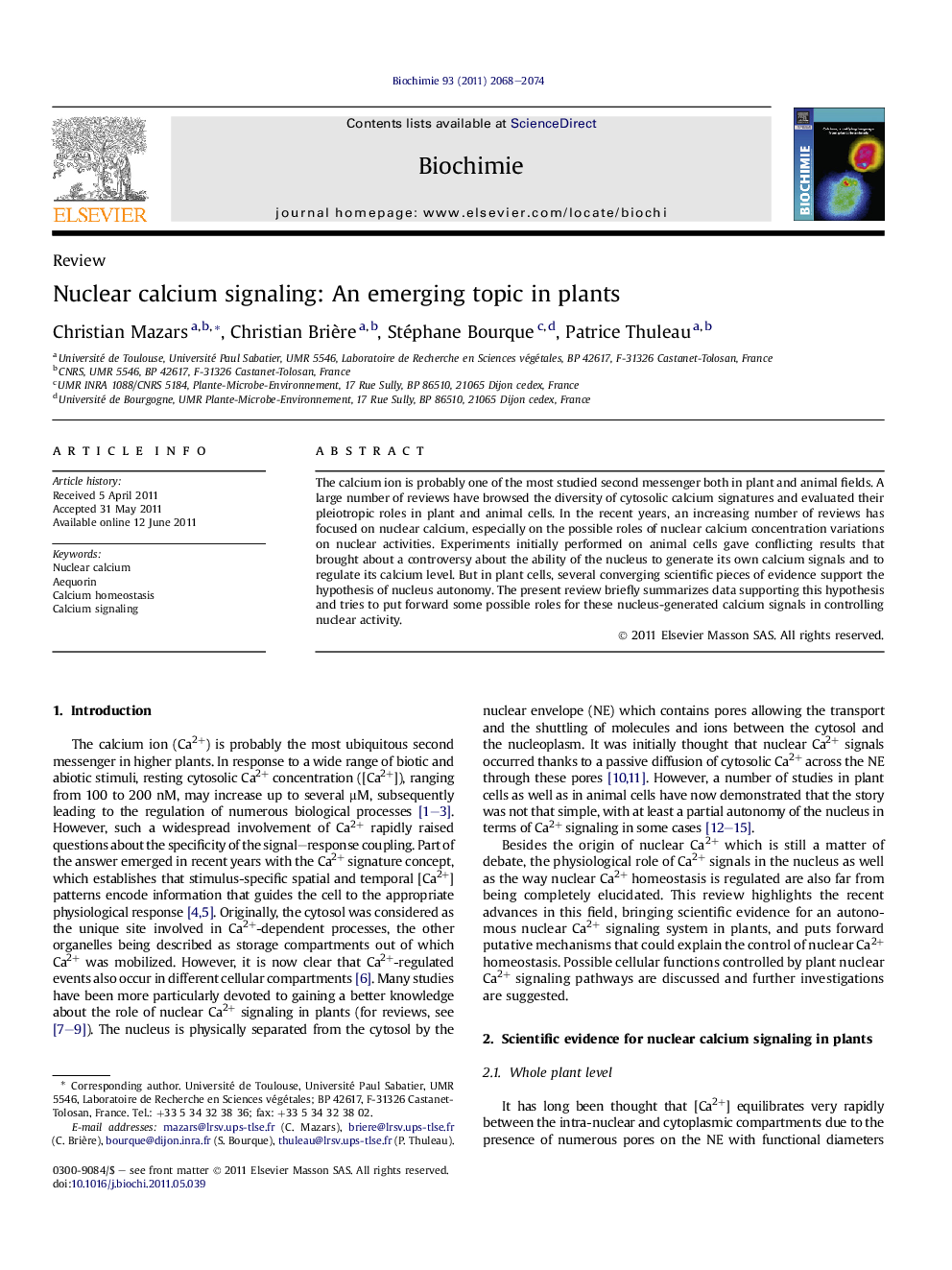| Article ID | Journal | Published Year | Pages | File Type |
|---|---|---|---|---|
| 1952201 | Biochimie | 2011 | 7 Pages |
The calcium ion is probably one of the most studied second messenger both in plant and animal fields. A large number of reviews have browsed the diversity of cytosolic calcium signatures and evaluated their pleiotropic roles in plant and animal cells. In the recent years, an increasing number of reviews has focused on nuclear calcium, especially on the possible roles of nuclear calcium concentration variations on nuclear activities. Experiments initially performed on animal cells gave conflicting results that brought about a controversy about the ability of the nucleus to generate its own calcium signals and to regulate its calcium level. But in plant cells, several converging scientific pieces of evidence support the hypothesis of nucleus autonomy. The present review briefly summarizes data supporting this hypothesis and tries to put forward some possible roles for these nucleus-generated calcium signals in controlling nuclear activity.
► The nucleus can be autonomous in terms of calcium signaling in tobacco. ► External calcium cannot diffuse freely through the nuclear pore complexes in tobacco. ► IP3r, TRP-like and/or glutamate channels can shape the nuclear calcium signals in tobacco. ► Calcium buffers and transporters are needed for explaining nuclear calcium kinetics. ► Nuclear calcium might control transcription through nuclear calcium sensors.
